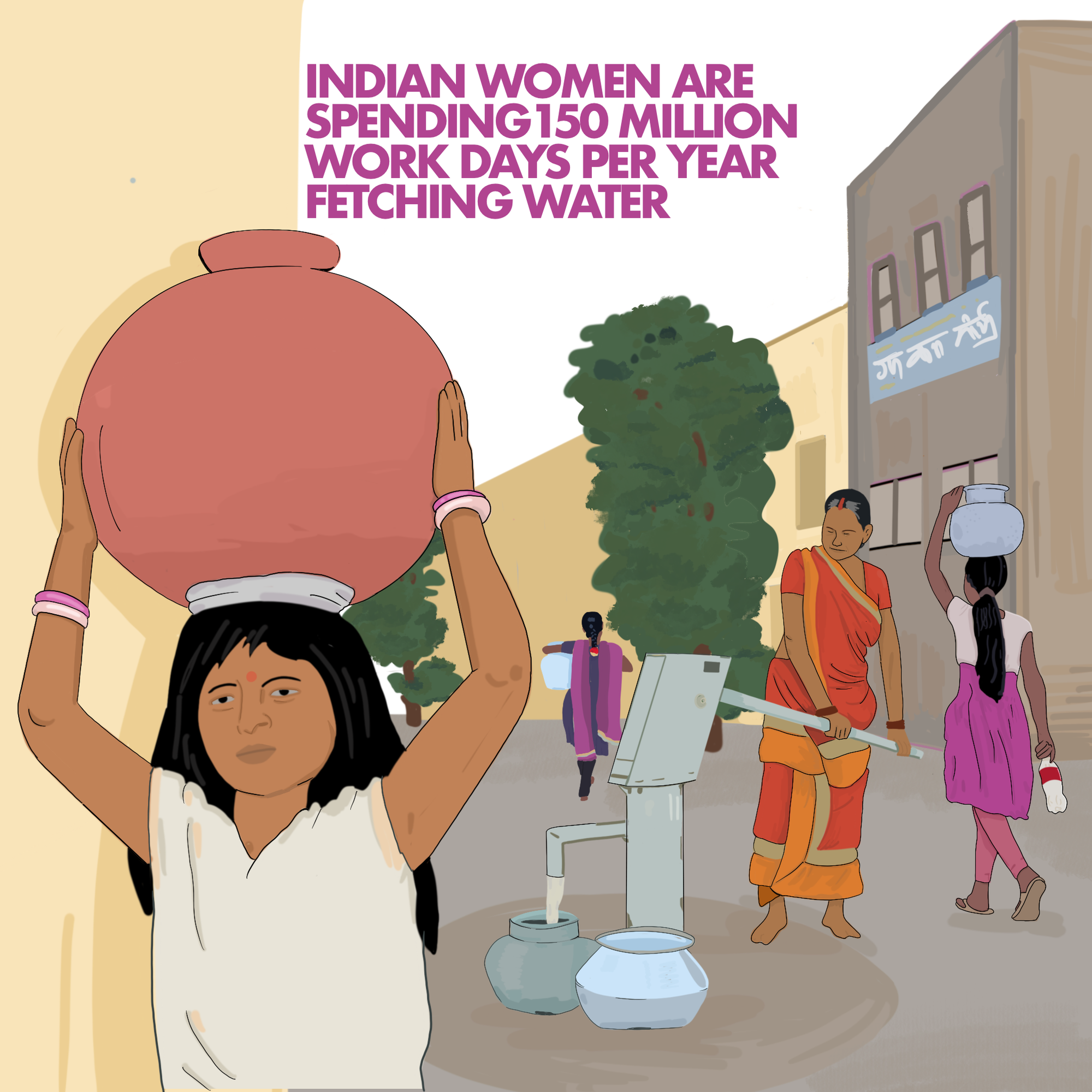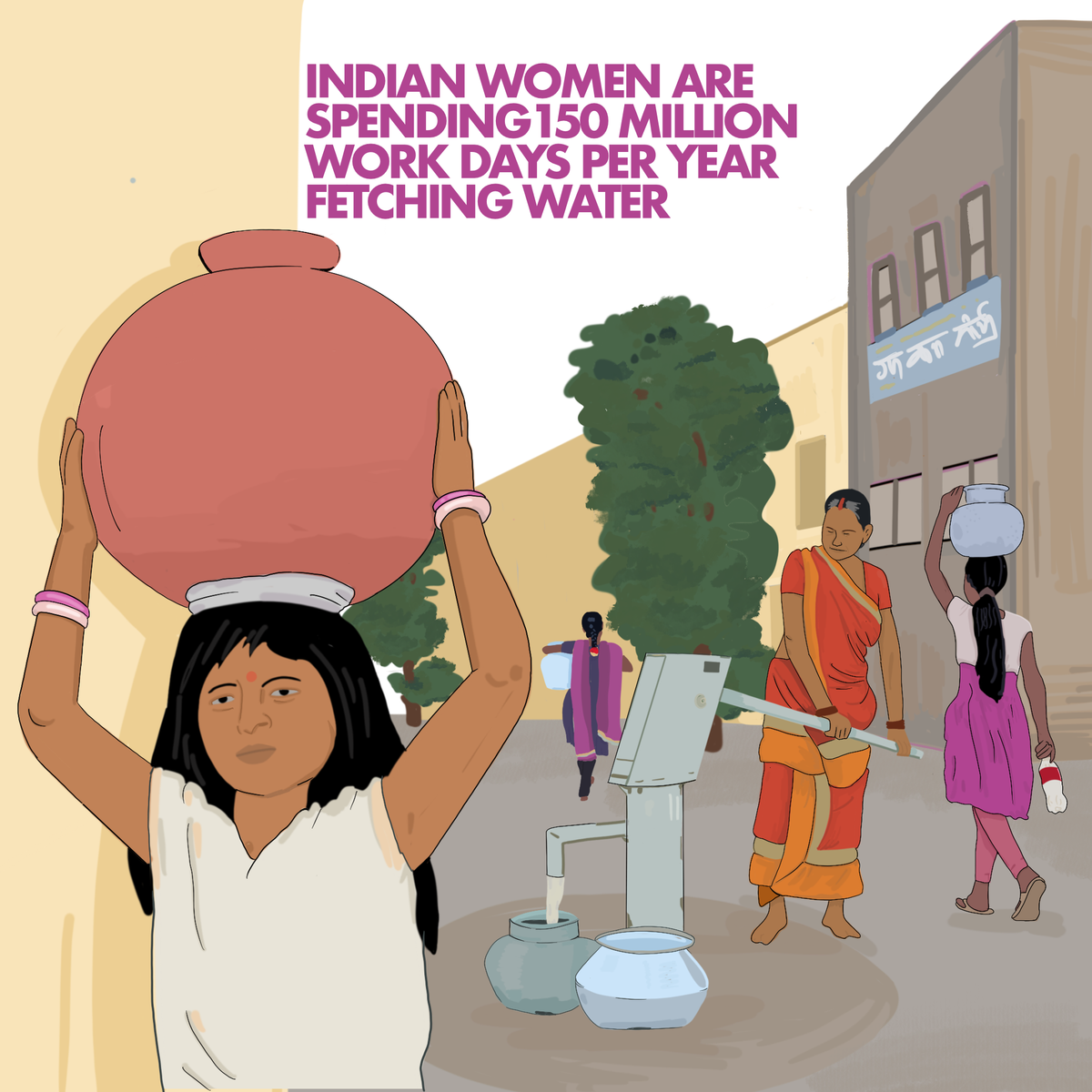
This statistic by the International Development Organisation report is unsettling. Who could imagine that women would spend so much time of their lives fetching for the most basic necessities.
This is not just a rural issue. I found this piece done by BBC on the tribal women of Tringalwadi area situated 180 kms from India’s economic capital Mumbai. One woman featured in rhetorical article supposedly spends four-to-five hours every day travelling back and forth from her nearest reliable water source. The pain does not end here.
- Lot of the water resource have scarce supply
- They end up with dirty water
- The women suffer from back and neck pain due to the weight of the utensils and the water stored in them
A 2023 report by the World Health Organisation (WHO) and Unicef mentions that 1.8 billion people worldwide collect drinking water far away . It also states that in 7 out of 10 households women and girls are responsible for water collection.
Currently women's unpaid work due to fetching water amounts to around 22.7 trillion rupees as per the State Bank of India (SBI)’s Ecowrap report. Imagine the financial independence these women would gain if they spent the same time being gainfully employed. Also a great way to boost the economy.
The Indian government has been working in vain to build and upgrade water infrastructure across India. By January 2024, it said it had provided piped water to almost 74% of rural, which does not seem to be the case.
It’s a pitiful state in major cities as well, where the movement and time of women is dictated by the water supply that is available for a stipulated time in the day. This hinders their ability to pick up jobs that demand working from the office or a full-day shift. In some places the water is released or supplied during mid-day or post 3 pm, in turn restricting their mobility.
It is not just about women saving time to engage in employment; we even need to pay heed to health issues caused by walking long distances in changing climatic conditions all through the year.
Water solutions at the community-level, and especially powered by women, will bring about sizeable change. Few organisations are creating water ATMs and training women to create water stores. While they work on creating equitable access to water, public health is also a concern with similar organisations working on sanitation and hygiene practices.
The access to water, its hygiene and the role of women are inter-linked. This connection places a disproportionate burden on women, and simultaneously makes them powerful agents for change in their communities.
Balancing this interconnection is crucial.
You can be an agent of change by sharing our Instagram post on this topic:
https://www.instagram.com/p/C_N2DWRI5fC/


